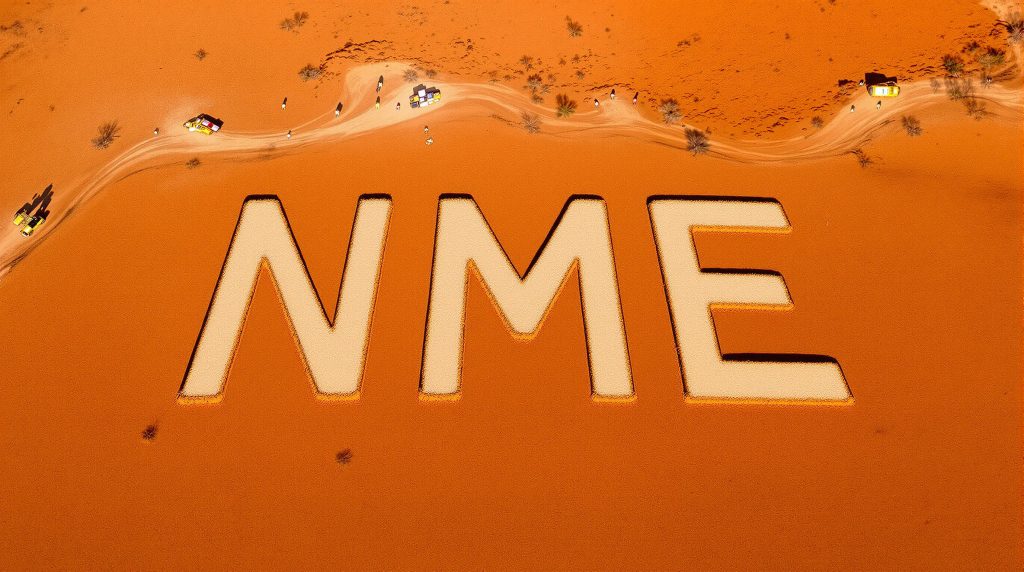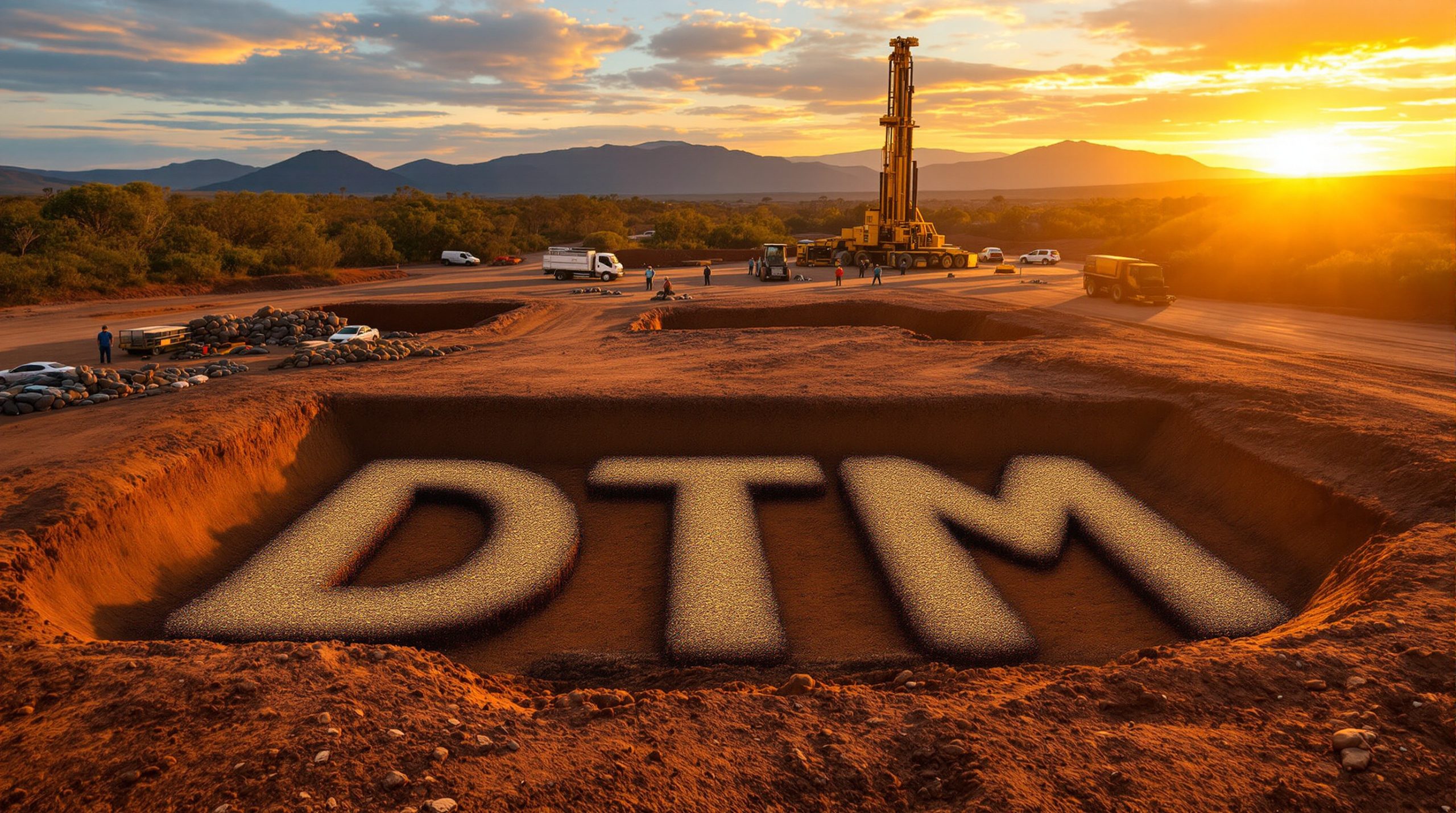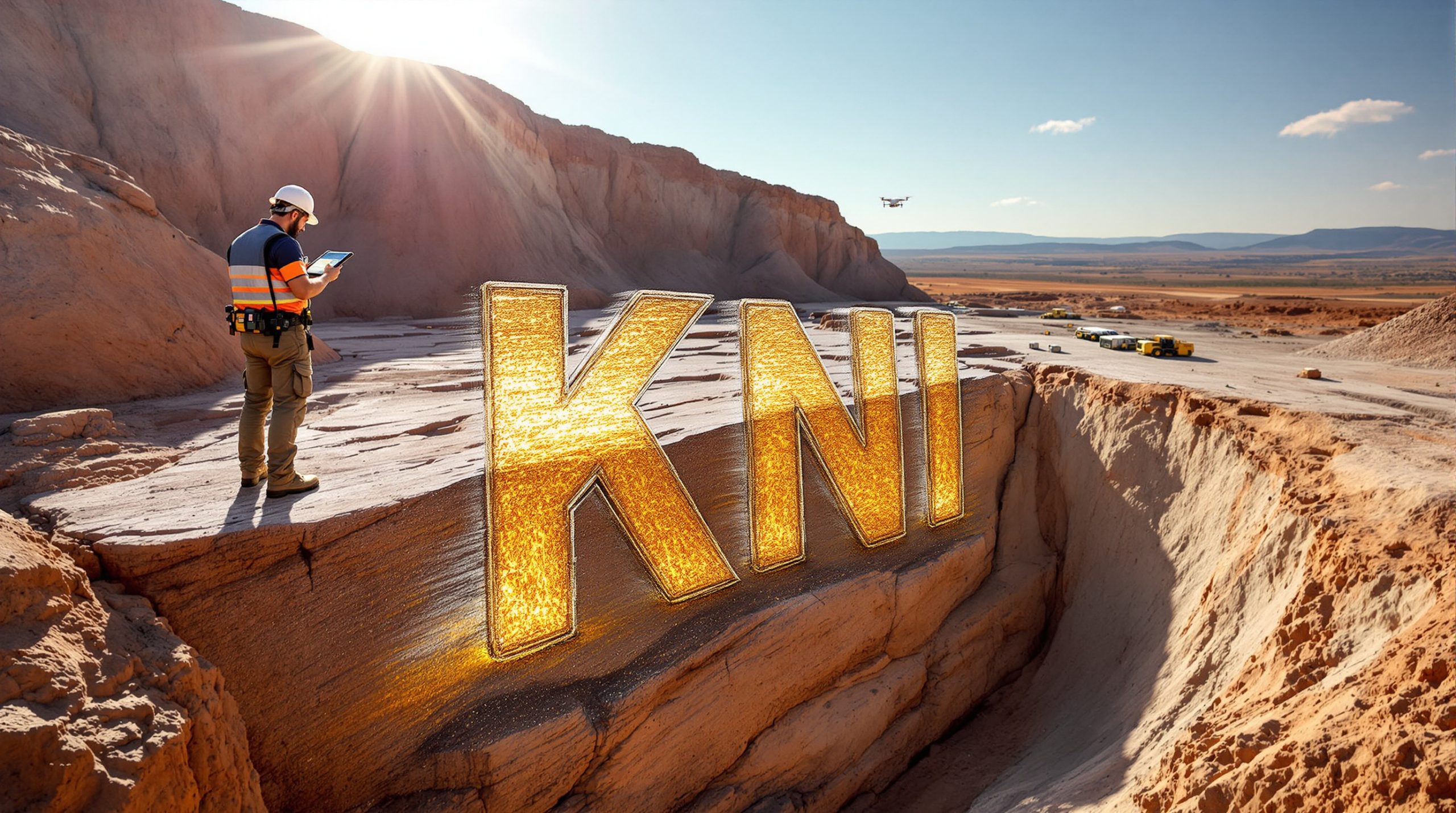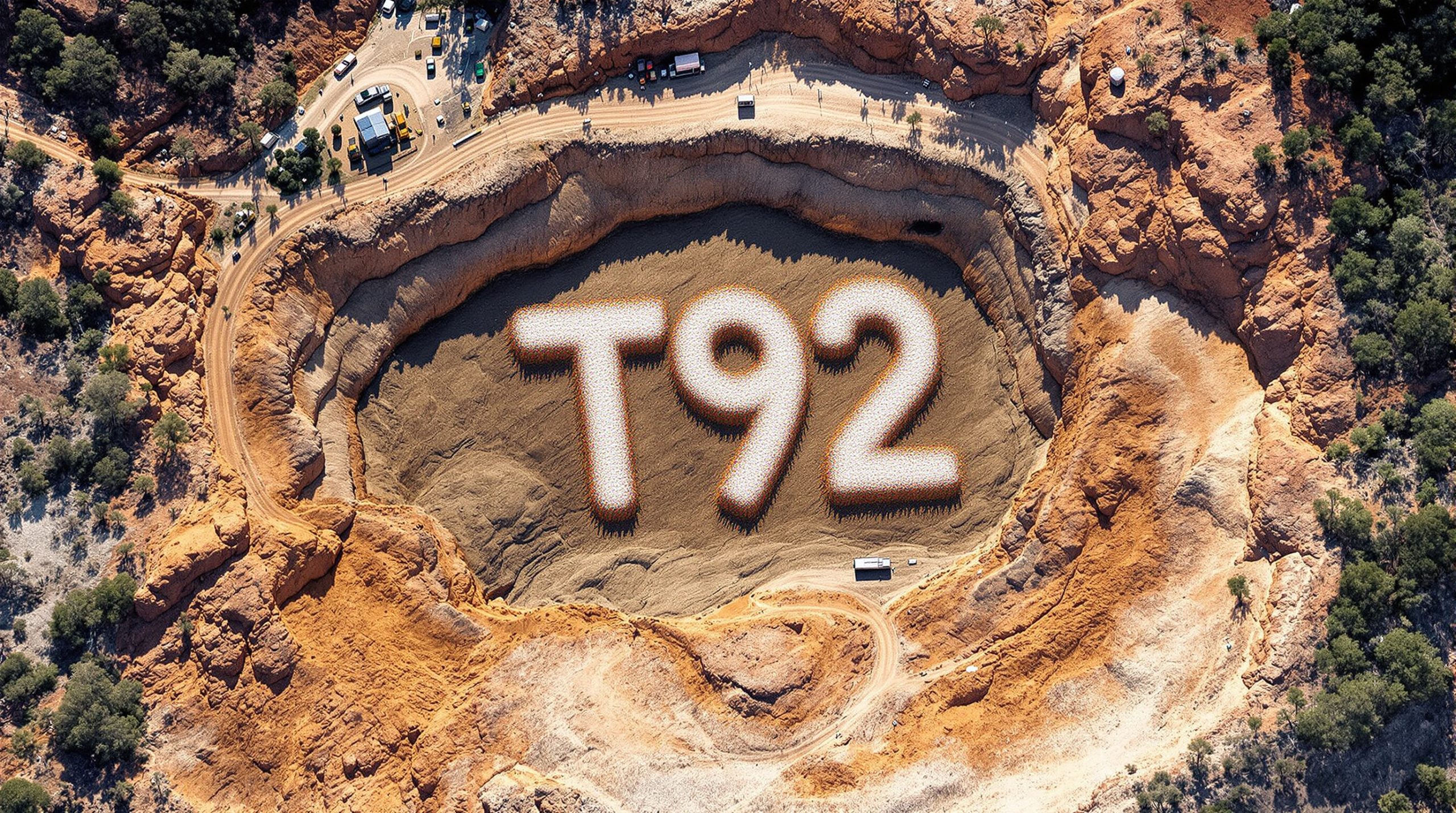New Gold Targets Emerge at Arika's Yundamindra Gold Project in Western Australia
Arika Resources (ASX: ARI) has identified four compelling new bedrock gold targets at its Pennyweight Point prospect within the Yundamindra Gold Project in Western Australia, following the first-ever application of high-resolution geophysical surveys in the area.
The Yundamindra Gold Project in Western Australia represents a significant exploration opportunity in one of Australia's most prolific gold regions. These newly discovered targets were revealed through ultra-detailed, high-resolution airborne magnetic and ground gravity surveys – marking the first time modern geophysical exploration methods have been deployed at Yundamindra.
All four targets lie within the northeast-trending Pennyweight Point structural corridor and display geophysical, geochemical, and geological signatures consistent with the setting at Pennyweight Point, where Arika has previously reported spectacular drilling results.
High-Priority Gold Targets Unveiled Through Advanced Geophysics
Previous drilling at the Yundamindra Gold Project in Western Australia has yielded impressive results including:
- 35.76m @ 2.14g/t Au (including 13.46m @ 5.28g/t Au)
- 23.97m @ 2.54g/t Au (including 5.38m @ 10.62g/t Au)
- 14m @ 15.48g/t Au
- 30m @ 3.86g/t Au
Critically, none of these newly identified targets have ever been drill-tested, representing significant exploration upside for the company.
"The application of modern geophysics is an essential part of our exploration toolkit at Yundamindra. These initial geophysical results are exciting and have revealed several compelling bedrock gold targets that resemble the mineralisation at Pennyweight Point itself," said Arika's Managing Director Justin Barton.
Strategic Location in a World-Class Gold District
The Yundamindra Gold Project is situated just 65km southwest of Laverton in Western Australia's northeastern goldfields, a region that hosts several multi-million-ounce gold deposits. The project lies within the Laverton Greenstone Belt, which has produced over 28 million ounces of gold.
Furthermore, the project operates under a joint venture structure, with Arika Resources holding 80% ownership and NEX Metals Exploration Ltd holding the remaining 20% interest.
Signature of Major Gold Systems
The geophysical data has revealed that the Pennyweight Point area features a structurally complex intrusive, volcanic, and granitic interaction with intense structural disruptions – key elements consistently associated with many of the region's most significant gold deposits.
These geological characteristics mirror those found at major multi-million-ounce deposits in the region, including Granny Smith (Gold Fields: NYSE/JSE: GFI) and King of the Hills (Vault Minerals; ASX: VAU).
What Makes These Targets Compelling?
Each of the four targets displays unique characteristics that make them prime candidates for gold mineralisation:
| Target | Key Characteristics |
|---|---|
| PWP1 | A discrete magnetic source showing multiple shearing events with potential pyrrhotite mineralisation |
| PWP2 | Possible southern repeat of Pennyweight Point mineralisation |
| PWP3 | Larger area of altered magnetism with irregular distortions suggesting unusual physical/metamorphic processes |
| PWP4 | Similar to PWP3, with potential magnetic sources resembling those at PWP1 |
Importantly, these targets coincide with some of the area's highest historical gold-copper-arsenic geochemical soil anomalies, further enhancing their prospectivity.
Understanding Pennyweight Point Mineralisation
Gold at Pennyweight Point is hosted within a quartz-feldspar phyric Tonalite Porphyry at the contact with a broad sequence of tholeiitic basalt. The mineralisation is associated with intense potassic, biotite, chlorite, and sericite alteration, along with disseminated sulphides and elevated copper, silver, tellurium, bismuth, and arsenic.
This distinctive mineralisation signature has provided Arika with a robust exploration model to identify similar targets elsewhere in the Yundamindra Gold Project in Western Australia.
What's Next for Arika?
The company is planning Induced Polarisation (IP) electrical geophysical surveys to further refine these targets before drill testing. RC drilling is already continuing across the Yundamindra Project, with the new Pennyweight Point targets to be incorporated into this ongoing program.
Additionally, analysis of a recently completed airborne magnetic survey over the southern half of the project is well advanced, with targets to be refined through field mapping, rock chip sampling, and soil geochemical surveys prior to drilling.
Understanding Geophysical Exploration
What is Geophysical Targeting?
Geophysical targeting uses measurements of the earth's physical properties (magnetism, gravity, electrical conductivity) to identify geological structures and rock types that may host mineral deposits. In gold exploration, these methods can reveal "blind" deposits that show no surface expression but have distinctive physical signatures at depth.
For investors, the application of advanced geophysics represents a systematic, science-driven approach to exploration that can significantly increase the probability of discovery while reducing drilling costs by precisely defining targets.
Types of Geophysical Surveys Used at Yundamindra
Airborne Magnetic Surveys
Arika employed an ultra-detailed drone-supported airborne magnetic survey with the following specifications:
- Flight line spacing: 25m
- Sensor height: 25m
- Equipment: Scintrex CS-VL caesium vapour magnetometer
This high-resolution survey provides detailed information about magnetic variations in underlying rocks, helping to identify potentially mineralised structures.
Ground Gravity Surveys
The company also conducted detailed ground gravity observations with:
- Station spacing: 25m
- Line spacing: 50m
- Equipment: Scintrex CG-6 gravity meter
Gravity surveys measure subtle variations in the earth's gravitational field caused by density differences in subsurface rocks. These variations can indicate the presence of different rock types or structures that may host gold mineralisation.
The Pennyweight Point Project Context
Gold was first discovered at Pennyweight Point in 1895. The area saw extensive surface alluvial mining and small-scale underground operations in the early 20th century, targeting near-surface gold-bearing quartz veins.
During the late 1980s and early 1990s, several companies including Sons of Gwalia, Saracen, and Mt Burgess conducted limited shallow drilling around the historical workings. However, low gold prices at that time (approximately AU$350-$500/oz) made the project uneconomic, and exploration ceased.
Arika's current assessment of Pennyweight Point represents the first modern exploration conducted in over 20 years. The company's dual-focused strategy aims to:
- Expand the known mineralisation by testing strike and depth extensions
- Test for "blind" deposits using insights from Pennyweight Point to locate additional orebodies beneath the extensive surficial cover
Investment Perspective
Arika's systematic approach to exploration at the Yundamindra Gold Project in Western Australia demonstrates a methodical strategy to unlock value across the project. The company is building upon its initial high-grade gold discoveries at Pennyweight Point by applying modern exploration techniques to identify repeat mineralisation styles.
The identification of four new high-priority targets, all with strong geophysical and geochemical signatures but never previously drill-tested, represents significant exploration upside. Moreover, the geological setting, featuring complex structural disruptions within granitoid-greenstone contacts, mirrors that of major multi-million-ounce deposits in the region.
With ongoing drilling across multiple targets and a pipeline of additional prospects being generated, Arika is well-positioned to deliver a steady flow of exploration results through 2025. The company's 80% ownership of the Yundamindra Project provides substantial leverage to exploration success.
Why Investors Should Follow Arika Resources
Arika represents an opportunity to gain exposure to systematic gold exploration in one of Australia's premier gold provinces. The company's approach combines:
- A strategic land position in the prolific Laverton Greenstone Belt
- Application of modern exploration techniques in historically under-explored areas
- A pipeline of high-priority targets ranging from advanced prospects to new discoveries
- Strong initial drilling results demonstrating the presence of high-grade gold systems
- Experienced technical team with a track record of systematic exploration
With active drilling programs underway and a series of newly identified high-priority targets, investors can expect regular news flow as Arika advances its exploration strategy across the Yundamindra Gold Project in Western Australia.
Looking for the Next Major Gold Discovery in Australia?
Discover why significant mineral finds like Arika's promising targets at Yundamindra could generate substantial returns by exploring Discovery Alert's dedicated discoveries page, where our proprietary Discovery IQ model provides real-time alerts on ASX mineral discoveries, giving you a crucial market advantage.




